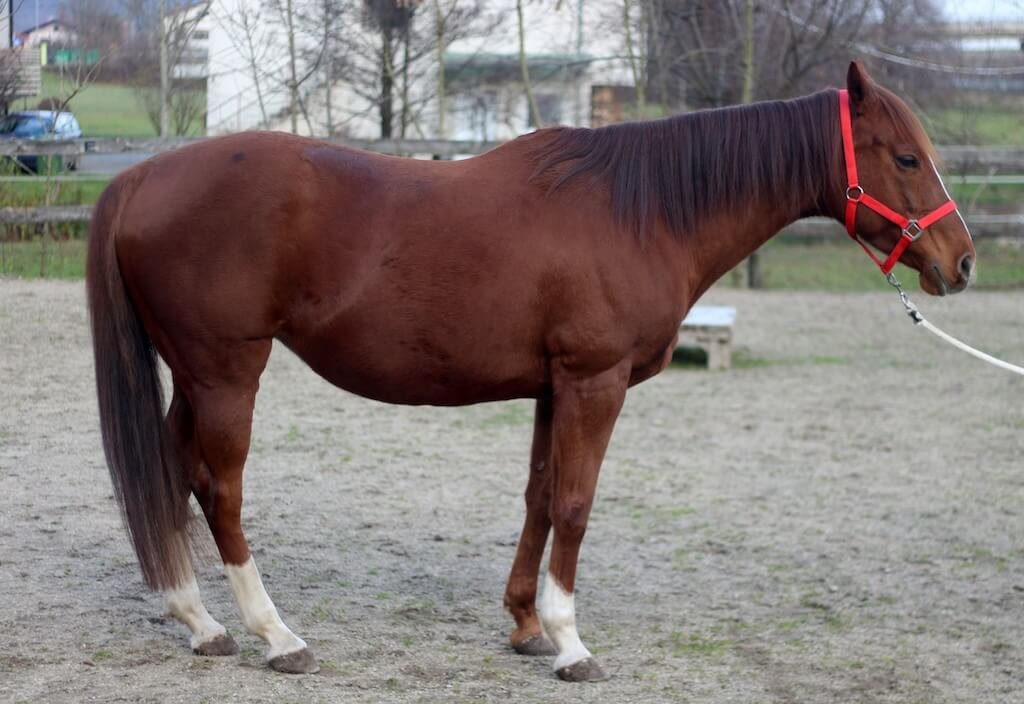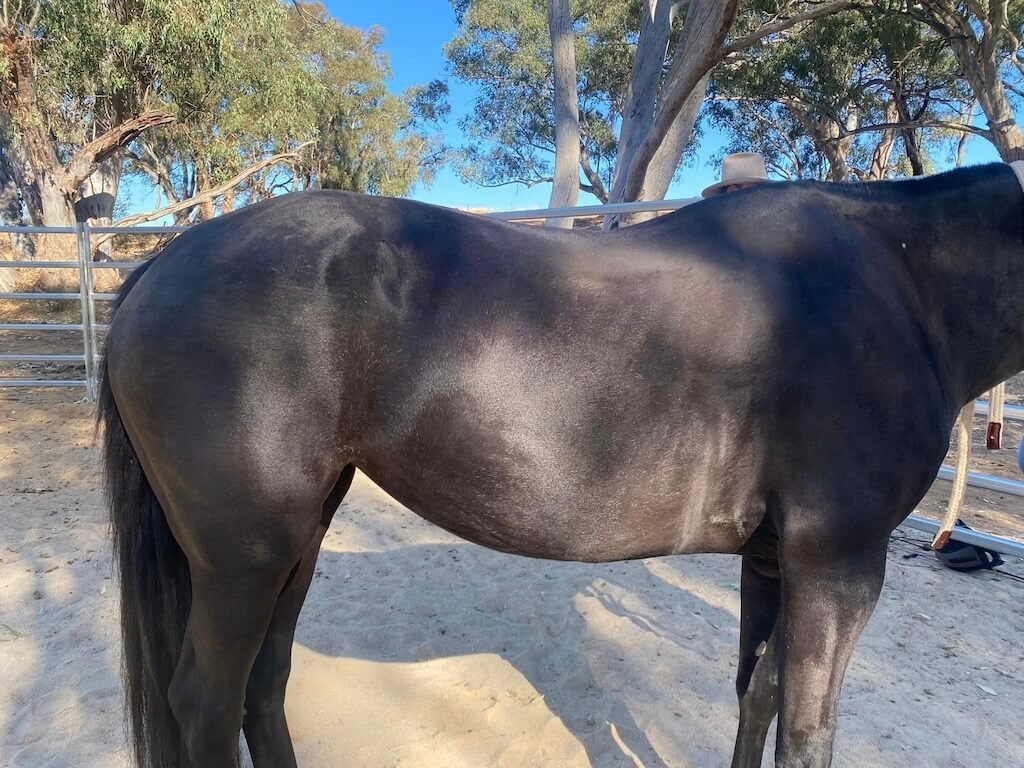Five signs of hind end dysfunction
Problems in the hind end often go unnoticed, until we end up with an injury or a sore back. Here are some red flags to look out for.
An asymmetry in the tuber coxae can be a sign of hind end dysfunction.
Problems in the hind end are very common in horses, but too often they get labelled as back issues. Sensitivity or pain in the back region very often stems from problems around the pelvic limbs and until it is recognised as such it will keep coming back. Here are some very common signs of dysfunction of the hind limbs.
1. Camped under stance
Standing too far forward with the hind limbs is a very common sign of problems in the hind limbs. With this stance, the cannon bones, which should be perpendicular to the ground, will appear slanted forward. Most of these horses will have issues in the hind feet – the toes will be too long and the heels underrun. In more severe cases, we can see a negative plantar angle, which means the coffin bone is tilted the worn way in the hoof capsule. This will then put additional strain on the upper structures of the leg, making the problem worse.
A camped under stance is often a complex problem.
2. Uneven muscle development
A horse in regular training should be developing all of his hind leg muscles evenly. His hind end should look nice and rounded. When the horse has trouble engaging his hind end properly, some of the muscles will become overdeveloped and tense, while others will be lacking in development. Most often, the hamstrings will be too developed and tight, while the quadriceps will be lacking. An underdeveloped quadriceps often goes hand in hand with a tight groin, which negatively impacts the stifle.
Overdevelopment of the hamstrings and underdevelopment in the quadriceps.
3. A roach back
Although you might think that an upward rounding of the lumbar spine might be a back issue, it very often starts as a pelvic limb problem. The psoas muscle, which is a hip flexor, runs from the lumbar vertebrae to the pelvis and femur. If it becomes tight, it can pull the spine and pelvis out of alignment, causing the angle of the pelvis to become too steep and the lumbar vertebrae to arch upwards. Tightness in the psoas is often accompanied by tightness in the diaphragm, which will limit the range of motion of the spine.
An upward curving of the lumbar vertebrae can stem from tight hip flexors.
4. Difficulty with retraction
A horse with tight hip flexors will often have a hard time stretching the leg backwards. This is something that your hoof care provider would definitely notice. Often, these horses need to pull their leg upwards and forward before they can release it behind them.
5. Asymmetry in the pelvis
An obvious asymmetry in the height of the tuber coxae (points of hips) can be a sign of hind end issues. This is especially true if there is asymmetry in muscle development as well, as this means that the horse is loading the left and right limb unevenly. When looking observing the height of the tuber coxae, stand behind the horse (safely) and make sure he is standing square.
In some horses you will be able to observe all of these symptoms and some will only have one or two of them. The next time you are at the barn, take a good look at your horse and see if you can spot any of these red flags. If you suspect your horse has an issue with his hind end, don't wait for it to become a full-blown injury. Keep in mind that the body always works as a whole and we need to treat it as such. Very often resolving these issues will take a multi-disciplinary approach – so be prepared to work closely with your trainer, bodyworker and hoof care provider.



